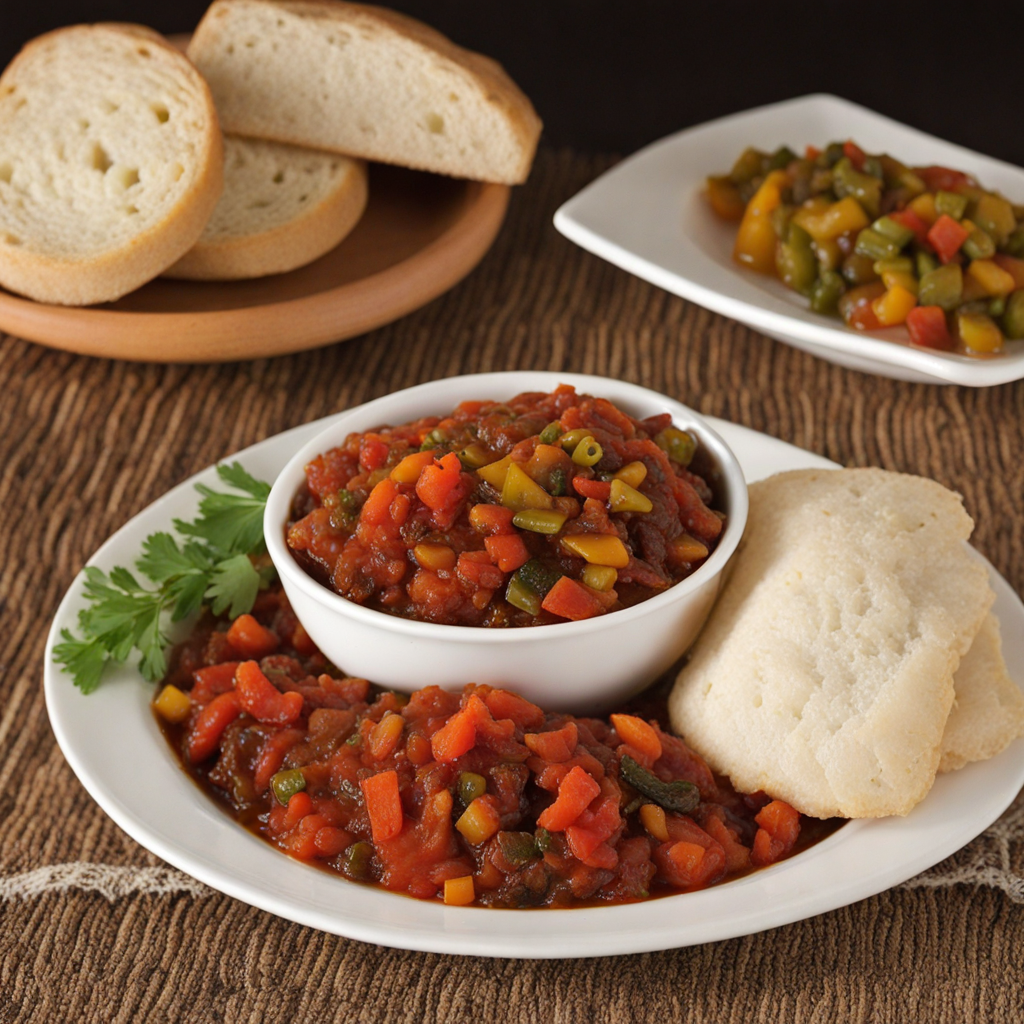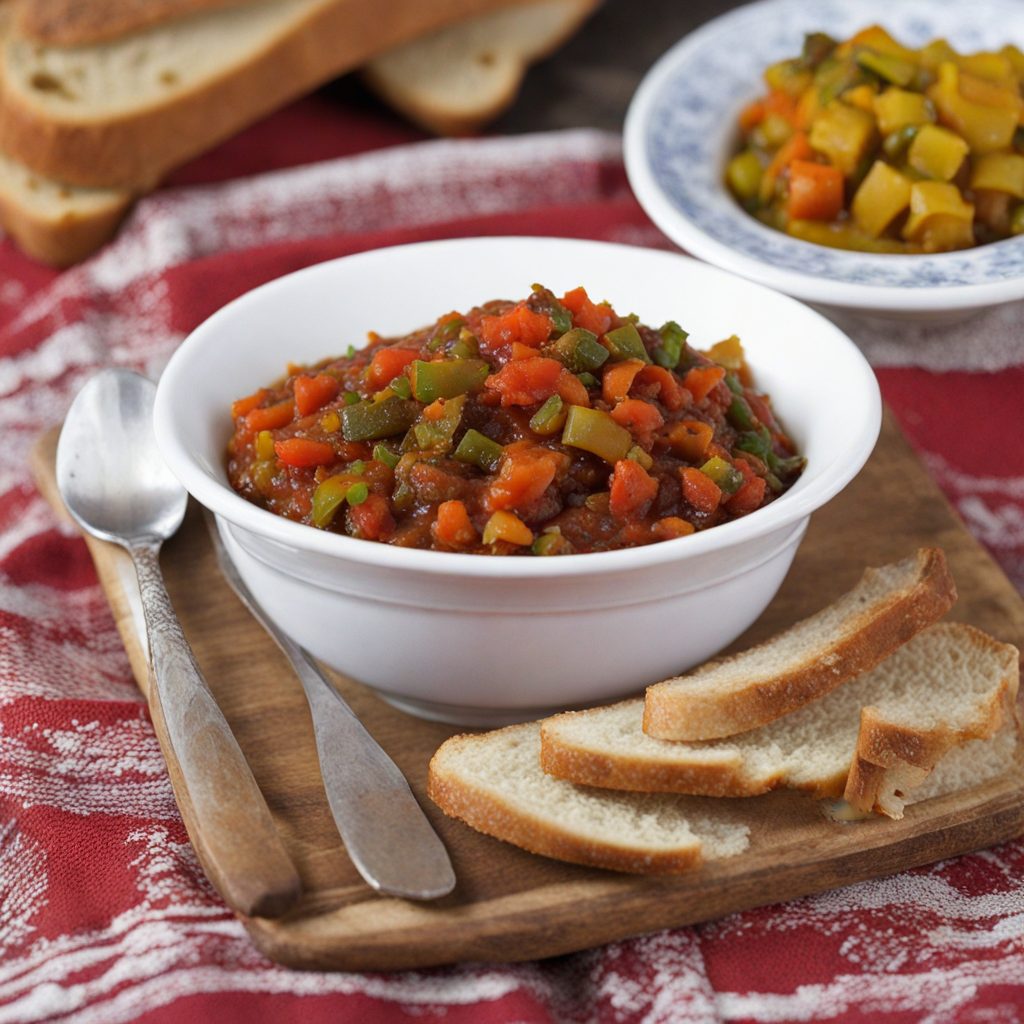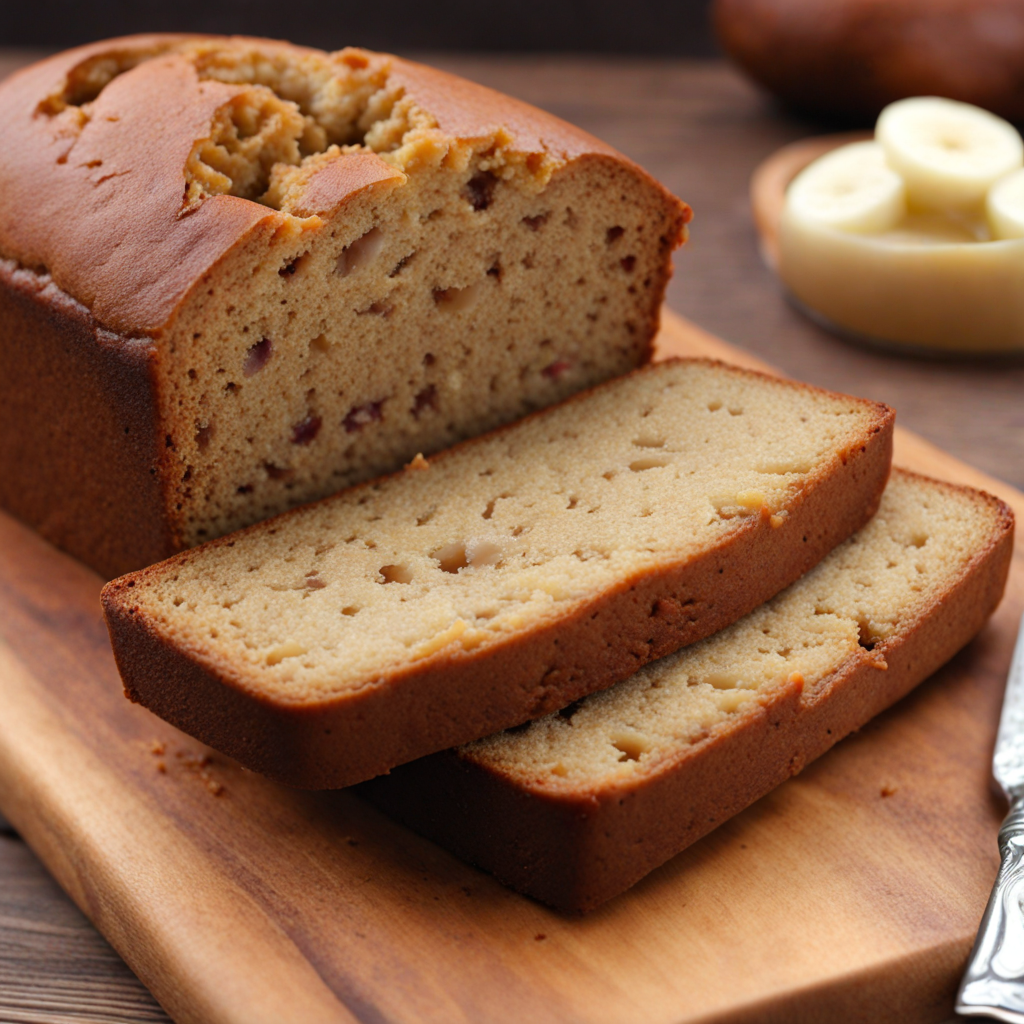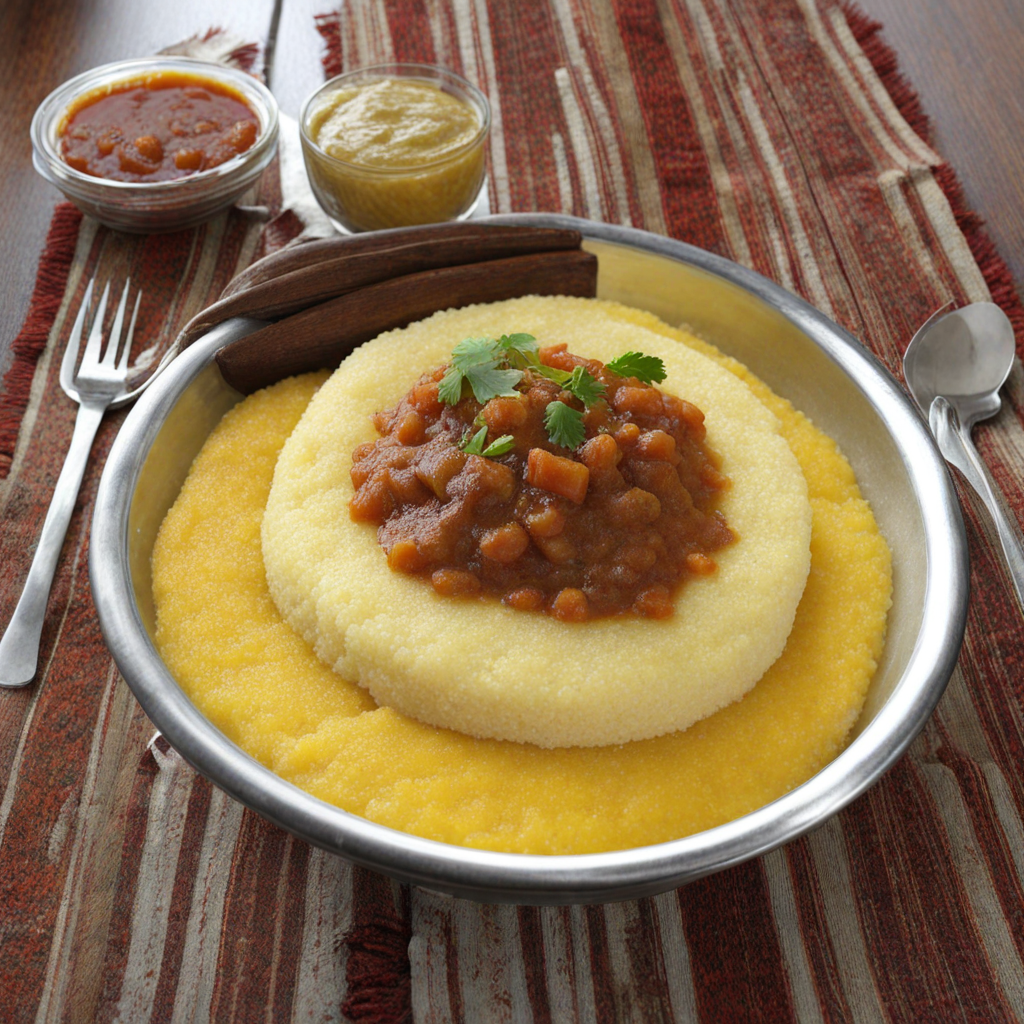Chakalaka
Chakalaka is a vibrant and spicy relish that hails from the southern African region, particularly popular in countries like Lesotho and South Africa. This dish bursts with flavors and colors, featuring a medley of vegetables such as tomatoes, carrots, onions, and bell peppers, all seasoned with a blend of spices. The inclusion of beans adds a hearty texture, making it not only a flavorful accompaniment but also a nutritious one that complements various meals. The use of chili peppers gives it a distinct kick, ensuring that each bite is exhilarating and satisfying. Traditionally, Chakalaka is served alongside staple foods like pap (a type of maize porridge) or braai (barbecued meats), making it a staple at gatherings and festive occasions. Its versatility allows it to be enjoyed as a side dish, a topping for grilled meats, or even as a filling in sandwiches. The dish is often prepared in large batches, as its flavors deepen over time, making it an ideal choice for sharing with family and friends. The beauty of Chakalaka lies in its adaptability; recipes can vary widely depending on personal preferences or regional ingredients. Some variations incorporate additional elements like curry powder, garlic, or even fruits such as mango for a unique twist. This dish not only reflects the rich culinary heritage of Lesotho but also invites you to explore the diverse taste profiles that celebrate warmth, community, and the joy of sharing food.
How It Became This Dish
Origin of Chakalaka Chakalaka is a vibrant and flavorful relish that has its roots deeply embedded in Southern African cuisine, particularly in Lesotho and South Africa. Its origins can be traced back to the migrant labor system of the late 19th and early 20th centuries when men from rural areas traveled to urban centers for work in mines and factories. These laborers often came from diverse cultural backgrounds, bringing with them their culinary traditions. Chakalaka emerged as a fusion food, incorporating elements from various ethnic groups, including the Sotho, Tswana, and Zulu people. Initially, Chakalaka was prepared as a simple dish to complement the staple food of the time, which included pap (a traditional maize porridge). The name "Chakalaka" is thought to be derived from the term used in the Zulu language, meaning "to mix" or "to stir," reflecting the dish's nature of combining different ingredients and flavors. The dish was typically made with readily available vegetables, spices, and sometimes meat, providing a nutritious and hearty accompaniment to meals. Cultural Significance Chakalaka holds a significant place in the culinary culture of Lesotho and the broader Southern African region. It is not just a dish but a symbol of community and togetherness. Traditionally, it is served at gatherings, celebrations, and communal feasts, where families and friends come together to share food and stories. In Lesotho, it is often enjoyed during major holidays, such as Christmas and Easter, as well as at weddings and other festive occasions. The versatility of Chakalaka is another reason for its cultural importance. It can be tailored to suit a variety of tastes and dietary preferences, making it suitable for both vegetarian and meat-based diets. This adaptability reflects the resourcefulness of the Basotho people, who have historically made the most of available ingredients. Over time, Chakalaka has transcended its humble beginnings, becoming a beloved dish not only in Lesotho but also across Southern Africa and beyond. Ingredients and Preparation Traditionally, Chakalaka is made from a combination of vegetables such as carrots, bell peppers, onions, and tomatoes, seasoned with spices like curry powder, garlic, and ginger. The dish can also include beans, lentils, or meat, depending on personal preferences and regional variations. The preparation involves sautéing the vegetables and spices together, allowing the flavors to meld and create a rich, savory relish. As the dish has evolved, so too have its ingredients. Modern versions of Chakalaka may incorporate additional elements such as chili peppers for heat or even fruits like mango for a sweet twist. This evolution mirrors the changing culinary landscape of Southern Africa, where globalization and increased access to diverse ingredients have influenced traditional recipes. Today, Chakalaka is often found in supermarkets, pre-packaged or as a condiment, further cementing its place in contemporary cuisine. Regional Variations While Chakalaka is a staple in Lesotho, it has numerous regional variations throughout Southern Africa. In South Africa, for example, it can be served as a side dish during braais (barbecues) and is often made with a spicier profile. Each region has developed its unique take on the dish, showcasing local ingredients and flavors. For instance, in the Eastern Cape, Chakalaka might contain more beans, while in urban areas, it may be prepared with a focus on convenience, using canned vegetables and sauces. These regional variations not only highlight the adaptability of Chakalaka but also reflect the diverse culinary traditions found across Southern Africa. As people migrate and settle in different areas, they bring their own influences to traditional dishes, creating a rich tapestry of flavors and techniques that continue to evolve. Chakalaka in Contemporary Cuisine In recent years, Chakalaka has gained recognition beyond its traditional roots, finding a place in contemporary cuisine both locally and internationally. The dish has become a popular accompaniment for various meat dishes, including grilled meats and stews, and is often featured on menus in South African restaurants. Chefs are now experimenting with Chakalaka, incorporating it into fusion dishes or elevating its presentation to appeal to modern diners. Furthermore, Chakalaka has also become a symbol of South African identity and pride. As the country continues to grapple with its complex history, traditional foods like Chakalaka serve as a reminder of the resilience and creativity of its people. Food festivals and cultural events often celebrate Chakalaka and other traditional dishes, showcasing the importance of culinary heritage in fostering community and cultural identity. Global Influence and Fusion As the world becomes increasingly interconnected, Chakalaka has found its way into the global culinary arena. Chefs and home cooks alike have embraced the dish, incorporating its flavors into various cuisines. This has led to an exciting fusion of culinary traditions, where Chakalaka may be served alongside Asian stir-fries, Mediterranean dishes, or even as a topping for tacos. The global popularity of Chakalaka highlights the growing interest in authentic, regional foods and the stories behind them. As people seek to explore different cultures through their food, Chakalaka stands out as a vibrant and flavorful option that brings together diverse influences while remaining true to its roots. This cross-cultural exchange enriches the culinary landscape and allows traditional foods to evolve while honoring their origins. Conclusion: The Future of Chakalaka Looking ahead, the future of Chakalaka appears promising. As more people become interested in healthy and sustainable eating, Chakalaka’s vegetable-rich composition positions it well within contemporary dietary trends. Additionally, the importance of food as a cultural expression ensures that traditional dishes like Chakalaka will continue to be cherished and celebrated. The dish’s adaptability will likely lead to further innovations as home cooks and chefs experiment with new ingredients and preparation methods. Whether enjoyed in its traditional form or as part of a modern fusion dish, Chakalaka remains a quintessential representation of Southern African cuisine, embodying the spirit of community, resilience, and creativity that defines the region’s culinary heritage.
You may like
Discover local flavors from Lesotho







